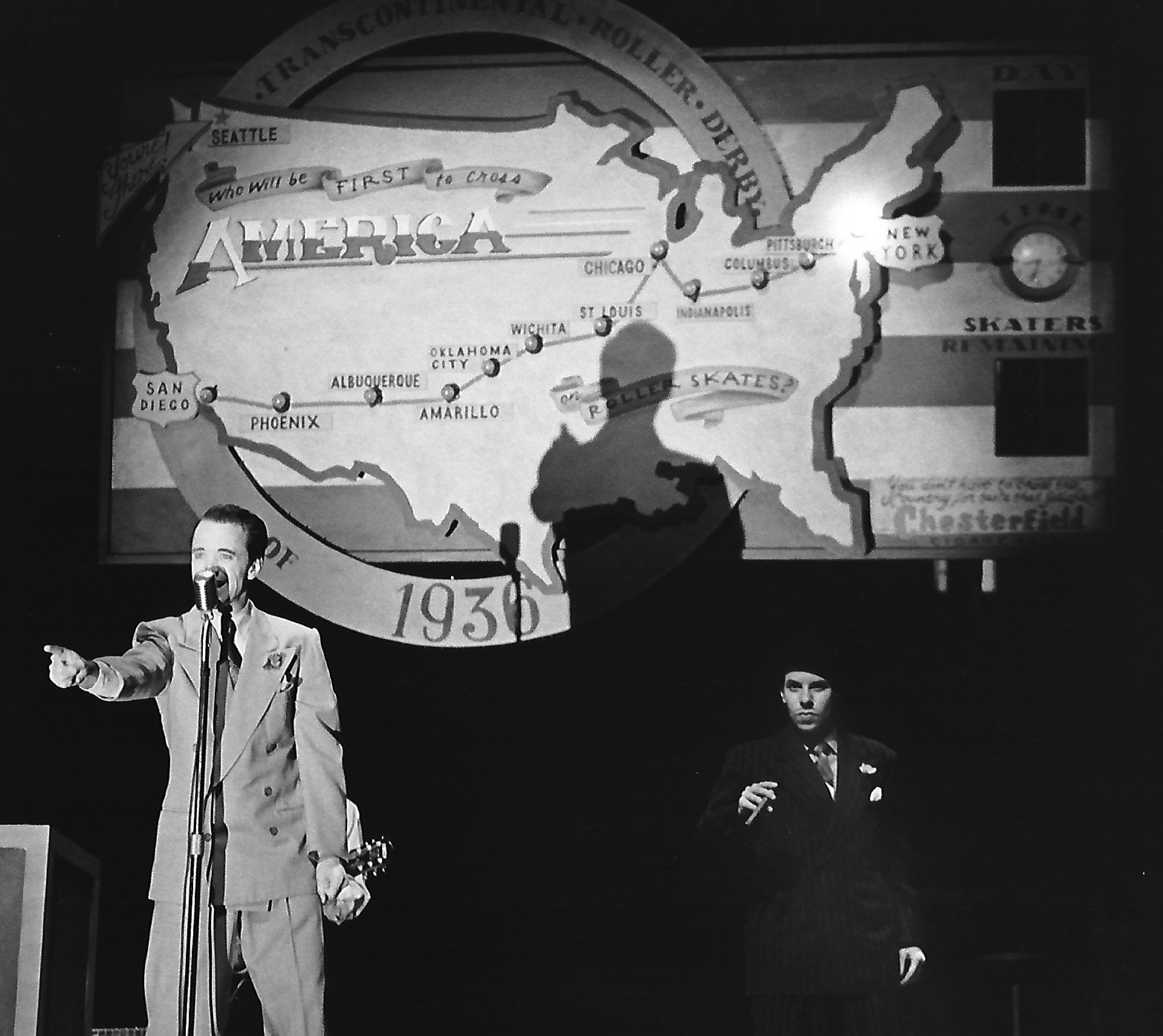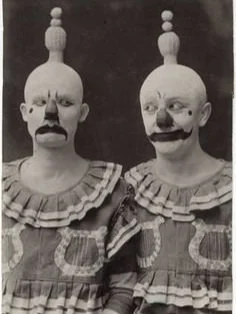Transcontinental
“If director Nikki Appino should ever decide to abandon the theater, she could make a lot of money coordinating and subverting such Dome-sized spectacles as monster-truck rallies, rock concerts, and wrestling matches. If you doubt me, you haven’t seen Rain City Rollers”. John Longenbaugh The Seattle Weekly
It’s 1936, the heart of the Great Depression, and everyone is wondering where the American Dream might have gone. Two small town girls, Flowers and Rosie want to ditch their dead-end lives and go find it. They get their chance in the form of the Transcontinental Roller Derby — an endurance skating contest, held on a track outside New York City with big prize money. Sounds like the Dream, right? Anyone can win? Well...not exactly.
Transcontinental is a new musical by Nikki Appino and David Russell. It’s a melodious myth about two childhood friends, the growing love between them, and the risks they will take - which transform them forever.
Working-class characters, gender-bending shifts and champagne-soaked movie spectacle are all here. Roll with us into the dark heart of the American Dream where "liberty and justice for all” is a sales pitch, and “the great melting pot” is where those at the bottom get burned...and everyone is in drag…














SYNOPSIS: 1936. Two nineteen year old girls from a nowhere town with a lifelong pact to realize their dreams, are lit on fire when they hear a radio audition for the new Transcontinental Rollerderby Competition. Flowers, the “pretty” one gets in but Rosie, the “butchy” one doesn't. Not to be stopped, resourceful Rosie finds some men's clothes and transforms herself into a handsome crooner to win a spot in the all-male band...Transcontinental is a musical myth about two childhood friends, the growing love between them and the risks they take, which transform them forever.
Co-written by Nikki Appino and David Russell this original musical is set at the halfway point of the Great Depression, when the prosperity of the ’20s was a distant memory and economic recovery was a distant dream. To combat the aimless despair of the period, new forms of escapist entertainment elbowed their way into popular culture. On the heels of the pie-eating, flagpole-sitting, record-breaking crazes came the dance marathons. Prizes awarded were set between $1,000 and $5,000 – a fortune to the mostly unemployed, working-class participants. These endurance contests also offered temporary food and shelter in addition to a chance at fortune and fame. Some competitors danced or dragged themselves around the floor for weeks at a time until they collapsed. Audiences in need of escape from their own misery showed up in droves to witness these pageants of exhaustion.
Leo Seltzer liked those odds. Half visionary, half huckster, the former film publicist saw an opportunity to line his pockets and came up with roller derby. The goal of Seltzer’s contest was to complete 60,000 laps on a banked oval track – the distance between New York and L.A. During its opening week in 1935, Leo Seltzer’s Transcontinental Roller Derby drew 20,000 spectators.
It wasn’t until he hooked up with sportswriter Damon Runyon however, did roller derby hit it big. Runyon helped Seltzer reshape the derby, changing the rules to allow for elbowing, slamming, pummeling, and other types of violence on the track. To enhance the drama, emcees and various forms of entertainment were added, including musical acts and staged fights. Crowds loved it.
Gender bending, roller skates and spectacle…Roll with us into the heart of the American Dream where love speaks its name.